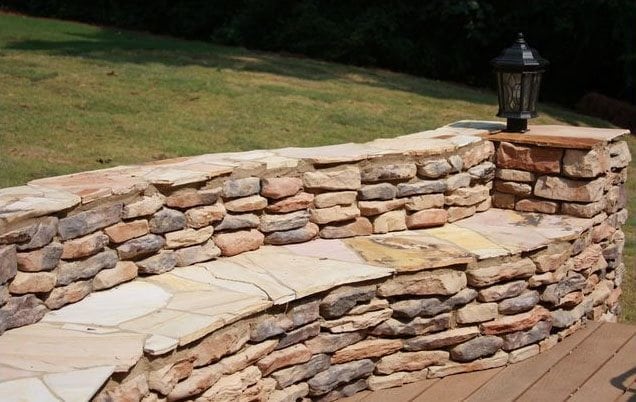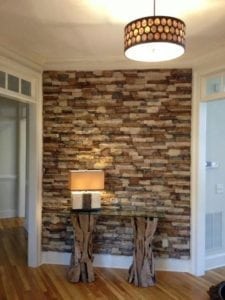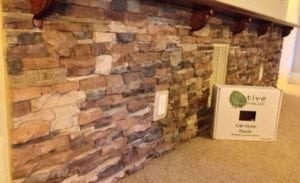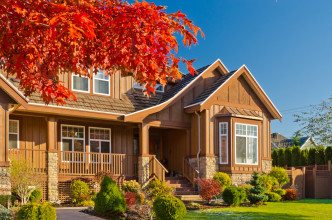Stone is a heavy, labor-intensive material that was commonly used for building centuries ago because it was so cheap. That was in the days before anyone ever dreamed of the day when simulated stone would be an alternative option.

Today, building with stone is a very expensive option that generally requires the services of a skilled stonemason.
While dry stone walls built outdoors don’t require a concrete foundation of any kind for support, the wall itself needs to have a wide base. As building progresses, the width of the wall decreases so that the finished structure has sloping walls. Whilst this type of structure is not suitable for the walls of a building, it could be used for a perimeter or garden wall.
A structural wall built with natural stone should be built on a solid concrete foundation designed to take the weight of the wall. The mass of the planned structure will be spread over the width of its foundation, in this way distributing the mass over a greater area. The actual size and design of the concrete foundation will, therefore, depend on the size and design of the house. Additionally, the load-bearing capacity of the soil will also be a factor.
While people do still build with stone, veneer, that is laid against a wood- or metal-framed wall is a cheaper, more viable option. But if natural stone is used, a concrete base will be needed, as will the services of a stonemason.
If a synthetic stone veneer is used, there is normally no need for special concrete foundations, irrespective of whether the simulated material is used on interior or exterior walls.
Stone Walls That Don’t Require a Concrete Base for Support
Native Custom Stone (NCS) produces a variety of stone veneer products, none of which require a concrete base or foundation for support. This is because the products weigh much less than natural stone or even manmade bricks and blocks.
Even the innovative, panelized Go-Stone veneer and interlocking Custom-Fit stone panels are simply applied to any surface that is structurally sound and clean. Absolutely no special foundations or structural alterations are necessary.
While standard manufactured stone veneer and Custom-Fit panels are installed using mortar, Go-Stone, which is made from mostly recycled products including old rubber tires, is installed using regular ceramic tile and stone adhesive.
Native Custom Stone specializes in simulated stone veneer products including faux stone panels. These products are available from NCS, Build Direct, or from Home Depot online.






Follow Us!